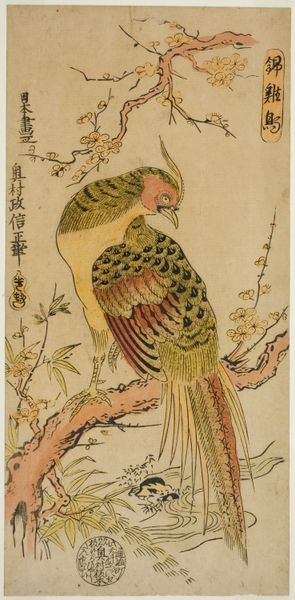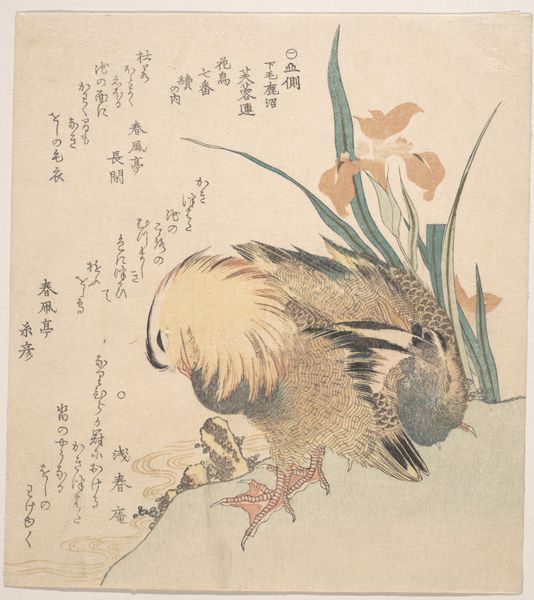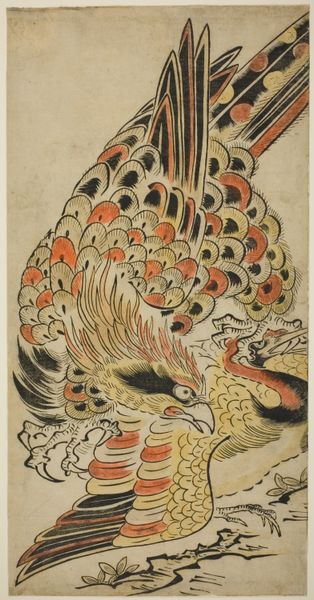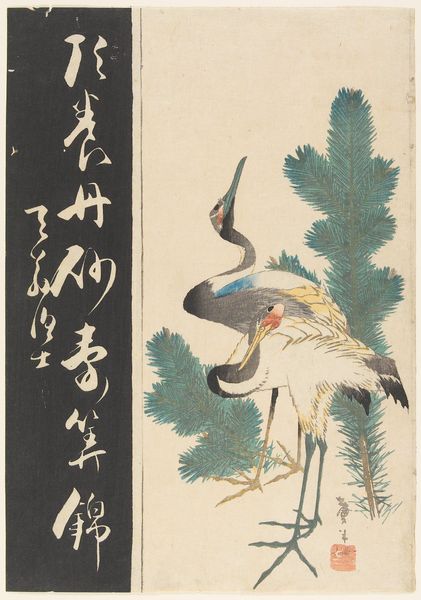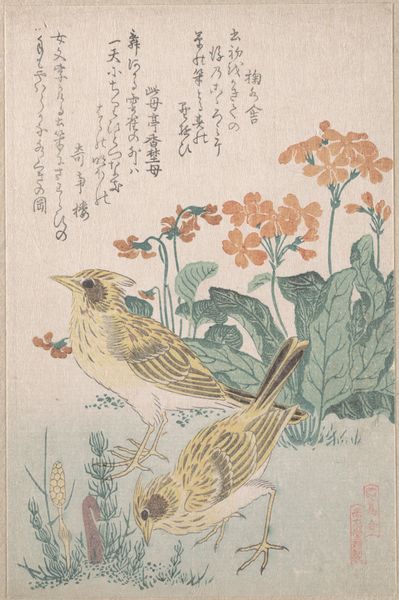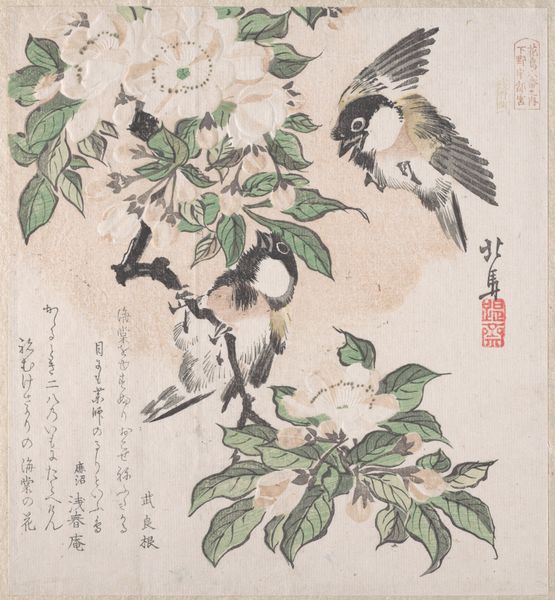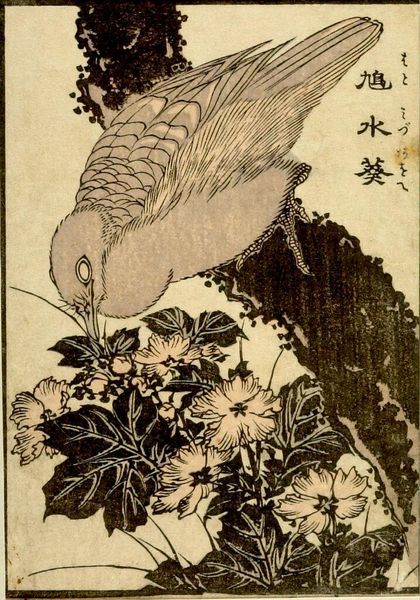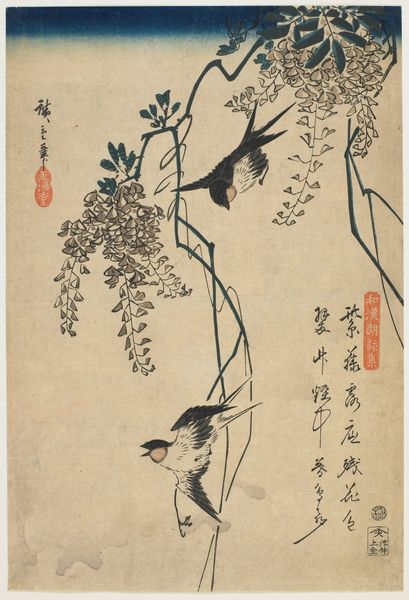
Mandarin Ducks, from the series "Kashinsai" c. 1725 - 1727
0:00
0:00
print, ink, woodblock-print
#
ink painting
# print
#
asian-art
#
landscape
#
ukiyo-e
#
ink
#
woodblock-print
Dimensions: 11 3/4 × 6 1/4 in.
Copyright: Public Domain
This woodblock print of Mandarin Ducks was made by Nishimura Shigenaga in the first half of the 18th century. Produced in Japan, the image comes from a period when the Tokugawa Shogunate enforced a rigid social hierarchy, and the merchant class, while economically powerful, found itself socially restricted. Prints like this offered a form of cultural expression that subtly navigated these constraints. The choice of Mandarin ducks is no accident; they were a symbol of marital fidelity and happiness in both China and Japan, values upheld by the ruling class. The naturalistic yet stylized depiction of the ducks, set against a backdrop of irises, reflects a broader interest in the natural world shaped by the formalized aesthetics of the Kano school, supported by the Shogunate. Understanding this print fully requires delving into the social history of the Edo period. Resources in museum archives and scholarly articles can further illuminate the complex interplay between art, patronage, and social values in 18th-century Japan.
Comments
No comments
Be the first to comment and join the conversation on the ultimate creative platform.
